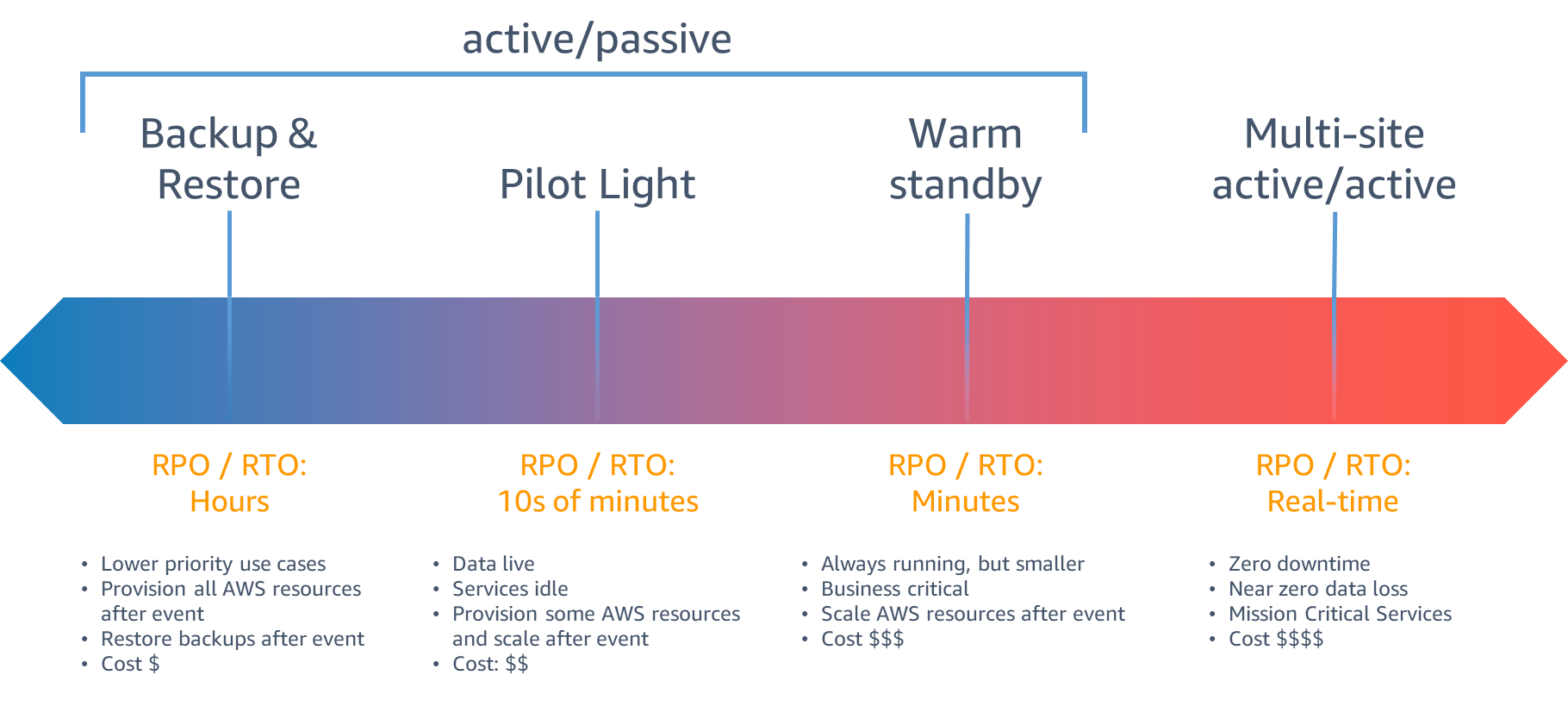
Of the most essential parameters for business continuity, Disaster Recovery (DR) would easily rank high as one cannot ignore business data vulnerability. Disasters can happen anytime in different ways. It can be due to server crashes, equipment failures, software or hardware hazards, etc. Hence, organizations need to have a fail-proof Disaster Recovery (DR) plan.
DR is a well-researched and planned documentation that mainly helps in data recovery and operational restoration. While organizations can design their own DR plans, most opt for DR plans of cloud-based service providers. This is because these plans are readily available, tested, and have hassle-free maintenance. One such cloud-based DR plan that we are going to discuss today is AWS DR plan.
Before that, here are the two important DR parameters:
- Recovery Point Objective (RPO)
RPO is the time between the disaster and the last data recovery point and indicates the amount of maximum data loss. - Recovery Time Objective (RTO)
RTO is the service downtime duration which indicates the maximum hours of business operation loss.

AWS Disaster Recovery plan
Here are the steps of the AWS DR plan:
- Research, plan, and document a Disaster Recovery strategy that recovers data and business without decreasing the operational performance.
- Understand the departments that are critically affected by disasters, estimate the downtime and data losses, and their impact on the growth and ROI of the business.
- Draft different control measures including protective, detective, and remedial measures.
- Identify the business departments that have minimal effect from the disasters and are less susceptible to data losses.
- Conducting several disaster-prone testing and providing necessary training sessions so that the teams are accordingly ready and take appropriate DR action based on the impact of disasters.
- Continuous maintenance and enhancements of the DR document to improve business efficiency against failures.
AWS Disaster Recovery Strategy
Here are the four strategies of AWS DR:
- Backup & Restore
This strategy is the cheapest one with the highest RTO. It creates backups in the same and/or different regions for data recovery during disasters. You can use IaC to deploy duplicate infrastructure across different regions. To compensate and reduce the RTO, you can implement improved detection & recovery mechanisms. - Pilot Light
This strategy has a reasonable cost and RTO number. There are several options available in this strategy to suit your business needs. Some of them include the following:
-
- Certain idle infrastructure points will be deployed only when triggered among all the data requests.
- In certain cases, you can altogether shut off resources by not deploying them.
- Turn on or deploy some of the instances using an existing Amazon Machine Image (AMI) that is duplicated in other regions.
- Keep the data in live mode or continuously update to the latest state as per the active state.
- Creating both replications and backups to enhance availability options. This ensures moving back to the previous good state.
-
- Warm Standby
The Warm Standby strategy falls on the slightly costlier side but with good RTO. This strategy keeps live data with recurring backups. It can ensure minimal data monitoring with limited capacity and is easy to test. However, it lacks a scalable infrastructure. - Multi-site active/active
This is the most reliable strategy with the lowest RTO but on the pricier side. This strategy maintains 2-3 active regions that are available to accept both read and write requests. In case of failover, the requests will be moved to a different region from the ones unable to handle the requests. One thing to ensure is having a data backup as you need to recover data in case of unprecedented data loss.

Advantages of AWS DR plan
Here are the reasons why most organizations prefer the Disaster Recovery plan of AWS:
- Due to the continuous live data presence, the DR plan helps in the quick resolution of any suspicious activities and helps in rapid data recovery.
- Organizations do not have to run around to gather DR information, record the document for audit purposes, etc. Everything will be available from the AWS end.
- This DR infrastructure is highly scalable depending on the business needs.
- The different strategies available for different business operational purposes make it highly reliable.
With four proven strategies and a holistic Disaster Recovery plan powered by AWS, enterprises across small-scale and large-scale can ensure readiness under any unpredictable events.
Global Technology Solutions Inc. is an AWS Advanced Tier Partner. Contact us today for a free consultation or to learn more about our AWS Disaster Recovery (DR) solution.